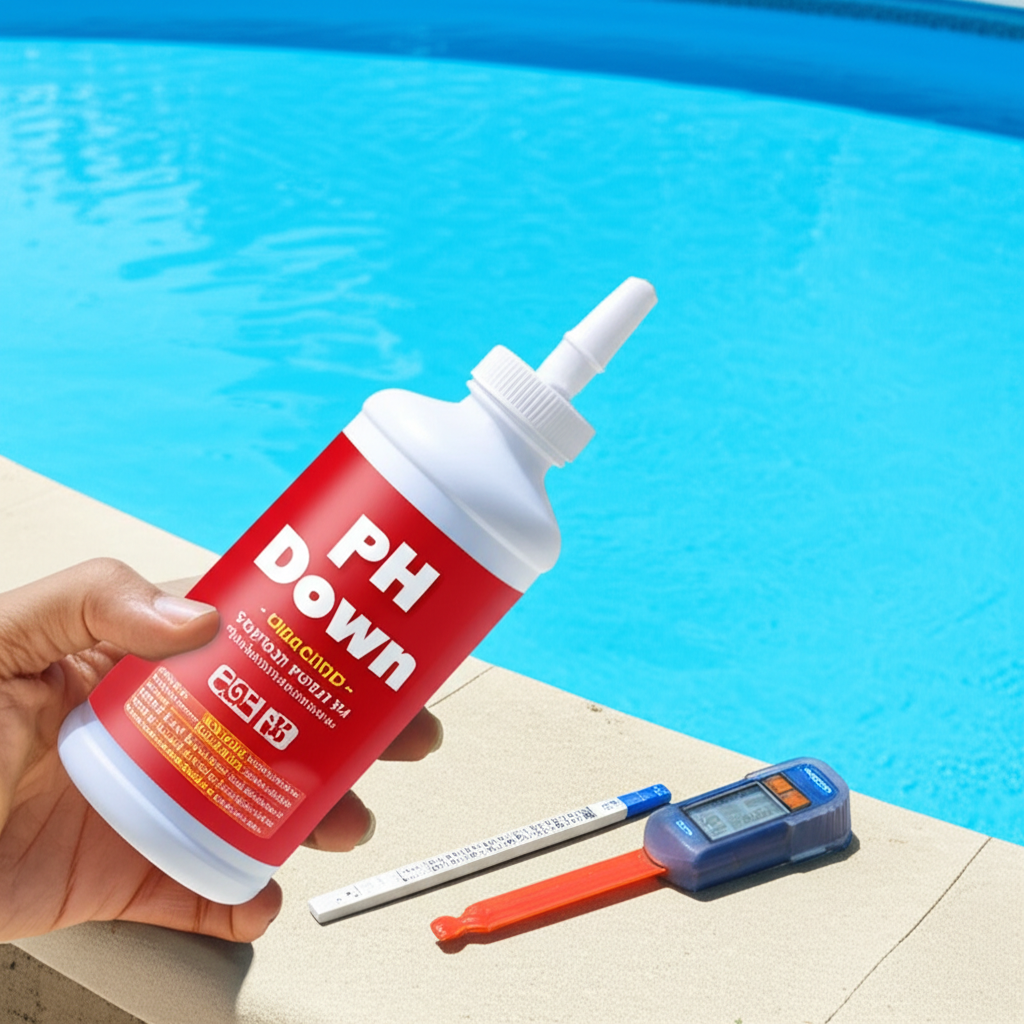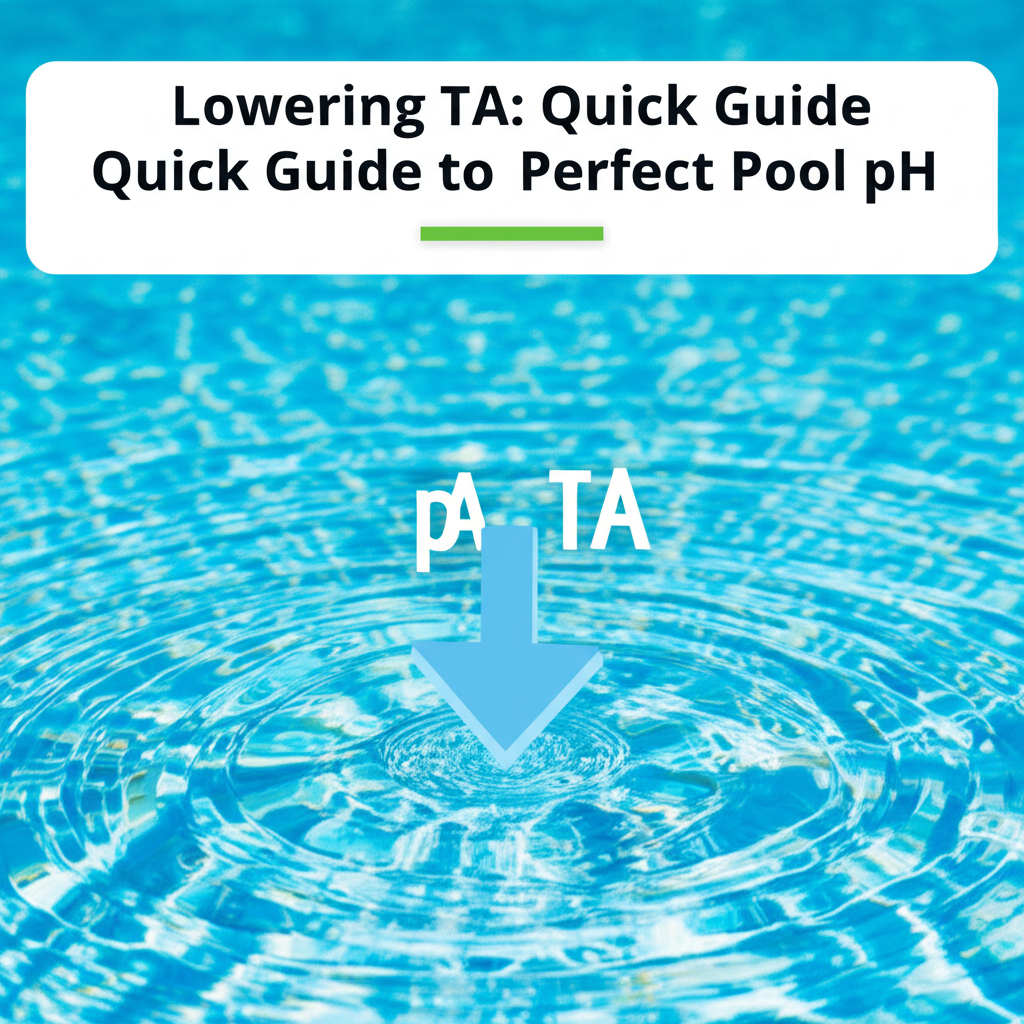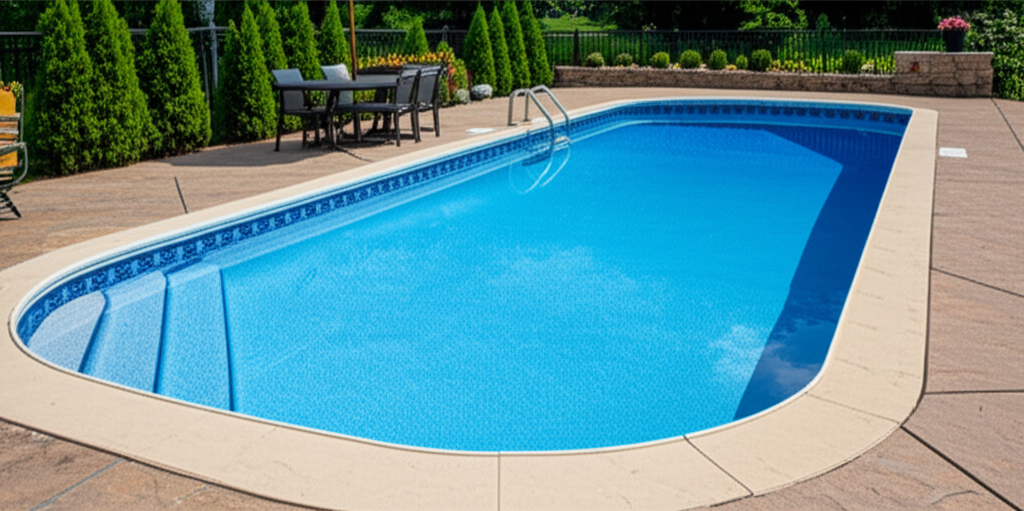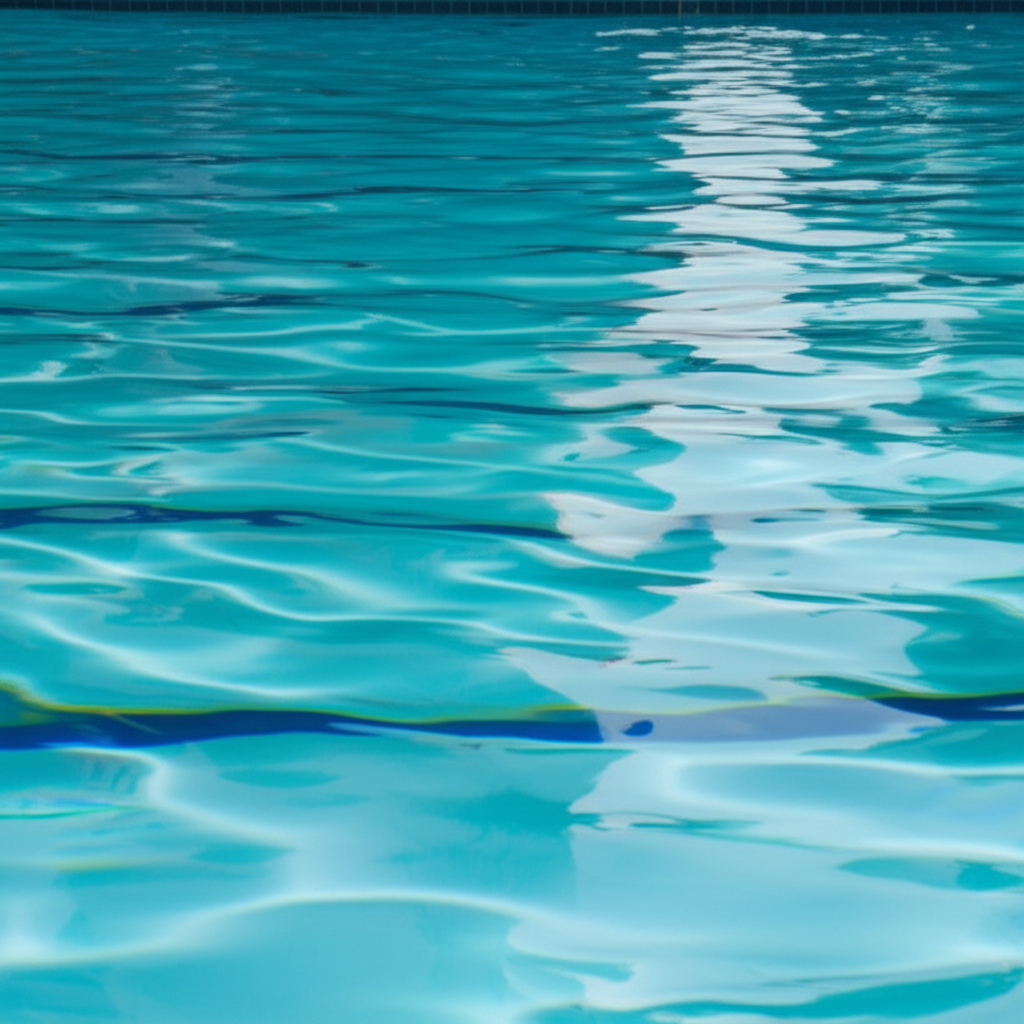- Understanding pH and Alkalinity: The Dynamic Duo
- Why You Might Need to Start Lowering TA
- The Process of Lowering TA: Your Quick Guide
- Achieving the Perfect Balance: The pH and Alkalinity Dance Off
- Maintaining Optimal Levels
Lowering TA, or Total Alkalinity, is a crucial step in achieving and maintaining a perfectly balanced swimming pool. Often misunderstood, TA acts as a vital buffer for your pool’s pH levels. When TA is too high, it creates instability, making it incredibly difficult to keep your pH in its ideal range, leading to a host of other water chemistry problems. Understanding the intricate relationship between pH and Alkalinity is key to unlocking crystal-clear, comfortable, and healthy pool water.
Understanding pH and Alkalinity: The Dynamic Duo
Before diving into how to adjust these levels, it’s essential to grasp what each one represents and why their balance is non-negotiable.
What is pH?
pH measures how acidic or basic your pool water is. The ideal range for pool water pH is between 7.4 and 7.6, mirroring the pH of human tears for comfort and promoting sanitizer effectiveness.
High pH (above 7.6): Can lead to cloudy water, scale formation on pool surfaces and equipment, reduced chlorine efficacy (meaning you need more chlorine to do the same job), and skin/eye irritation.
Low pH (below 7.4): Can cause etching of surfaces, corrosion of metal equipment, rapid dissipation of chlorine, and extreme eye/skin irritation.
What is Total Alkalinity (TA)?
Total Alkalinity refers to the concentration of alkaline substances in your pool water, primarily bicarbonates, carbonates, and hydroxides. Think of TA as your pool’s “pH buffer” or “pH shock absorber.” It resists changes in pH. The ideal range for TA is generally 80-120 parts per million (ppm), though some experts prefer 100-120 ppm for plaster pools.
High TA: Makes it very difficult to lower pH, causing “pH bounce” (pH quickly rising after adjustment), cloudy water from calcium carbonate precipitation, and scale formation.
Low TA: Leads to rapid and erratic pH swings, making it hard to stabilize. This can result in corrosion and staining.
The critical connection is that high TA will stubbornly hold your pH high. By adjusting your TA first, you create a more stable environment for your pH, allowing it to become more manageable.
Why You Might Need to Start Lowering TA
You’ll know it’s time to consider lowering TA when your test kit consistently shows readings above 120 ppm, especially if you’re simultaneously struggling with high pH. Common indicators that high TA is affecting your pool include:
Persistent High pH: You keep adding pH decreaser, but your pH quickly bounces back up.
Cloudy Water: Often due to calcium carbonate scaling, a side effect of high pH and TA.
Visible Scale Formation: White, crusty deposits on pool surfaces, tile lines, or equipment.
Reduced Chlorine Effectiveness: Chloramine formation increases, causing less effective sanitization and strong chlorine odors.
Regular testing with a reliable test kit or strips is your first line of defense. Always test your TA and pH at least once a week, more frequently if you’re experiencing issues or after heavy use, rainfall, or adding water.
The Process of Lowering TA: Your Quick Guide
The most effective and common method for lowering TA involves using an acid. The two primary options are muriatic acid (hydrochloric acid) or dry acid (sodium bisulfate). Muriatic acid is generally preferred for significant TA reduction due to its potency.
1. The Go-To Chemical: Muriatic Acid (Hydrochloric Acid)
Muriatic acid is a strong acid that effectively lowers both TA and pH. It’s potent, so safety is paramount.
Safety Precautions:
Personal Protective Equipment (PPE): Always wear safety glasses or goggles, chemical-resistant gloves, and old clothes that cover your skin.
Ventilation: Use in a well-ventilated area, avoiding inhaling fumes.
Children and Pets: Keep them far away from the pool area during application.
Handling: Always add acid to water, never water to acid. Store it safely and upright.
Step-by-Step Application:
1. Test Your Water: Get an accurate reading of your current TA and pH levels. Note both down.
2. Turn Off Circulation: Turn off your pool pump and filter. You want the water to be as still as possible to achieve localized acidity.
3. Calculate Dosage: This is crucial. Start with small increments. A general guideline is 1 pint of muriatic acid per 10,000 gallons of water will lower TA by approximately 10 ppm (and pH by about 0.2-0.4). Always consult a pool chemical dosage calculator or your local pool professional for precise amounts based on your pool’s volume and current readings. It’s better to add too little and retest than too much.
4. Dilute (Optional but Recommended for Beginners): For added safety, you can dilute the muriatic acid by pouring the calculated amount into a large plastic bucket half-filled with pool water. Always add acid to water, never the other way around.
5. Apply Slowly and Carefully: Stand at the deep end of your pool. Slowly and carefully pour the diluted (or undiluted, if experienced) muriatic acid directly into the deepest part of the pool. Do not pour near skimmers, returns, or main drains. You want the acid to sink and work on the TA in that localized area.
6. Wait: Allow the acid to work for 4-6 hours with the pump off. Do not stir or brush the pool during this time. The goal is for the acid to concentrate in the lower water levels to target the alkalinity more effectively.
7. Brush and Circulate: After the waiting period, turn your pump back on. Thoroughly brush the entire pool surface to help mix the water and distribute the acid evenly. Run the pump for several hours (an entire circulation cycle is ideal).
8. Retest: After 24 hours of circulation, retest your TA and pH. If your TA is still too high, repeat the process. Remember, it’s often a multi-step adjustment over several days.
2. Alternative: Dry Acid (Sodium Bisulfate)
Dry acid is a granular product that is less potent than muriatic acid and generally safer to handle. It also lowers TA and pH. However, if your TA is significantly high (e.g., over 150 ppm), you’ll need a much larger quantity of dry acid, which can be less cost-effective and may contribute to other chemical imbalances (like sulfates). For substantial TA adjustments, muriatic acid is generally more efficient. The application usually involves dissolving granules in a bucket of water before slowly pouring into the pool.
Achieving the Perfect Balance: The pH and Alkalinity Dance Off
When lowering TA with acid, you will invariably lower your pH as well. This is usually desirable if both were high. Once your TA is within its ideal range (80-120 ppm), you can then finely tune your pH.
If pH is too low after lowering TA: Use a pH increaser (sodium carbonate or soda ash) to bring it back to 7.4-7.6. Make small adjustments and retest.
If pH is perfect: Congratulations! You’ve achieved a stable balance.
Maintaining Optimal Levels
Maintaining ideal pH and Alkalinity is an ongoing process.
Regular Testing: Make it a habit to test your water 2-3 times per week, especially during heavy use or hot weather.
Environmental Factors: Rainfall can dilute your chemicals, lowering TA and pH. Evaporation concentrates chemicals, potentially increasing TA and pH.
New Water: Adding fresh fill water can alter your chemistry depending on your source water’s composition.
Swimmers: Bathers introduce phosphates, nitrates, and other compounds that can affect pH.
* Sanitizers: Certain pool chemicals, like some forms of chlorine, can impact pH.
By understanding the relationship between pH and Alkalinity and knowing how to effectively manage your TA, you’ll be well on your way to enjoying a perfectly balanced, sparkling clean, and inviting swimming pool all season long. Consistency in testing and making gradual adjustments is your most powerful tool.




